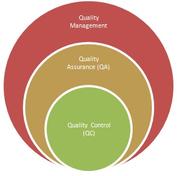Manual Testing vs. Automation Testing: A Detailed Comparison
Advertisement
This article explores the differences between manual and automation testing, two crucial approaches for identifying bugs and defects early in product development. Catching these issues early reduces rework, saving both time and money. Let’s dive into the definitions, advantages, and disadvantages of each method.
Manual Testing
Definition
Manual testing involves a test engineer manually evaluating software or hardware for defects. It’s a traditional, rigorous method where a tester interacts directly with the product.
Here’s a breakdown of the steps a manual tester typically takes:
- Understanding the Product: The tester first grasps the product’s functions and develops or obtains relevant test cases.
- Setting Up the Environment: They prepare the test environment and establish the testing procedure.
- Executing Test Cases: The tester manually runs the test cases, comparing results against predefined pass/fail criteria.
- Recording Results: The outcome of each test (pass or fail) is documented.
- Reporting: A report summarizing the findings is shared with the development team and relevant stakeholders.
Advantages of Manual Testing
- Cost-Effective: Manual testing is relatively inexpensive since it doesn’t require specialized automated equipment.
- Flexibility for Ad-Hoc Testing: Testers can freely perform exploratory and ad-hoc testing, often uncovering bugs that automated tests might miss.
- Easy Test Case Modification: Test cases can be easily added, removed, or changed during development.
- Good for Training: New testers can readily learn the process from experienced team members.
- Often More Reliable: In some scenarios, manual testing can offer more dependable results compared to automation.
Disadvantages of Manual Testing
- Time-Consuming: Because it’s done by humans, manual testing is typically slower than automated testing.
- Less Accurate: Manual testing is prone to human error, which can lead to less accurate results than automation.
- Challenges with Large-Scale Tests: Performing load or performance testing for a large number of users is difficult manually.
- Requires Skilled Testers: Testers need to be skilled and knowledgeable to effectively execute test cases and identify bugs, especially during random or ad-hoc tests.
Automation Testing
Definition
Automation testing utilizes automated tools and scripts to check software or hardware for defects. While a person initiates the test, the rest of the process, including recording results, occurs automatically.
The process typically involves:
- Test Script Development: Creating automated test scripts to cover various scenarios.
- Execution: Automated tools run these scripts and verify the results against expected outcomes.
- Result Storage: Results are often stored in databases or files, including all necessary details.
Advantages of Automation Testing
- Eliminates Human Error: Automation reduces the chance of mistakes during testing.
- Ideal for Load and Performance Testing: It’s efficient for conducting performance and load testing with many users.
- More Accurate: Automated testing often yields more precise and consistent results than manual testing.
- Faster Execution: Automated tests typically run much faster than manual tests, saving time and costs.
- Less System Knowledge Required: Testers don’t need as much hands-on knowledge to run automated tests.
- Parallel Work: Testers can start the test and do other work while the automation runs, promoting more efficient workflow.
Disadvantages of Automation Testing
- Requires Specialized Equipment: Automation often requires special tools and software, which can increase testing costs.
- Limited Flexibility for Random Testing: Automation isn’t always ideal for exploratory or random tests, which may limit its ability to find certain types of bugs.
- Test Interruption Issues: If a script fails or an equipment issue occurs, tests may stop running silently, potentially requiring re-runs, unless progress is periodically monitored.
Advertisement
 T&M
T&M 

